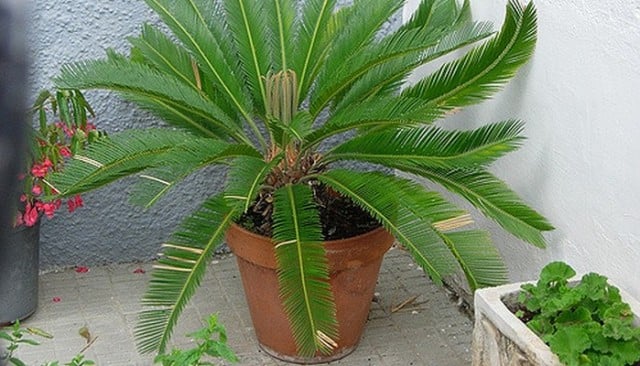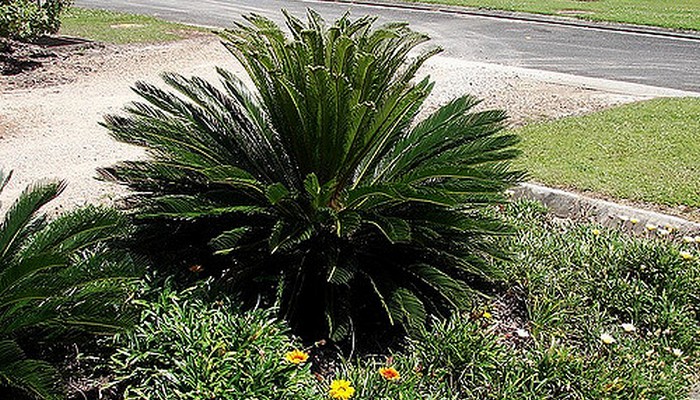
There are many plants that can be dangerous if our pets ingest them. Some of these plants may show up around the holidays, and many of them are not a threat as they don’t grow in your local area. Still, it’s wise to have a conversation with your vet or do some research online to discover which plants in your region could be harmful to your dog. One Texas family found this lesson out the hard way.
If you’ve got a green thumb, it’s important to know if any of the plants in your yard or around your home could be poisonous to your pet. In Texas, one very common household plant has led to the fatality of numerous dogs – the Sago palm.

Sydney Tuttle, a Weimaraner-bulldog mix, was the lone survivor of a puppy mill that bred bait dogs for dog-fighting operations. Her owner, Molly Tuttle, rescued last year. Molly always knew she would out live her canine companion, but never thought she would have to say goodbye to her pet after just 12 months together.
RELATED: What you Need to Know About Poison Prevention for Dogs
Molly noticed that Sydney was chewing on the root of a Sago palm that she kept as a household plant. She took the root away and didn’t notice any type symptoms until the next morning. Sydney started to throw up and was lethargic the following day. Molly took her to the vet to see what was going on and was devastated by the news.
Sydney’s liver values were steadily climbing and additional testing showed that she was unable to clot blood at all. At first, the vet didn’t understand what was wrong and Molly wasn’t able to connect the chewing of the root with the development of symptoms.
The doctor’s asked her if there was any way the dog could have gotten into any toxins, like rat poison. It wasn’t until a day later that they asked about Sago palm. Molly didn’t even know what Sago palm was at the time. The previous tenants in her home had planted some in the backyard and she liked the way they looked, so she kept them – not knowing exactly what they were.
Sago palms are very popular in Texas, and many other areas of the world too. You can buy Sago palms in many home and garden stores, and they go by several names (including just “palm”) depending on the retailer. The scientific name for the plant is cycas revoluta.
These plants require a warm climate, are inexpensive to buy and are fairly low maintenance; making them ideal houseplants and yard plants. Dr. Jean Rifkin, the veterinarian who treated Sydney, says that Sago palm toxicity is deadly about half of the time. She says that once symptoms arise it is usually too late to save the animal.

Rifkin says that if you know that your dog has ingested some of the plant you need to rush her to the vet immediately. Sydney was a strong fighter and lasted longer than most dogs in her position, but after $10,000 in medical expenses and two weeks her liver failed and she passed away.
After performing a quick internet search, I was able to pull up numerous stories about dogs being poisoned by the plant. There are even a couple of cases stating that children had gotten sick after ingesting pieces of the palm. According to the North Texas Poison Control Center, when ingested, Sago palm has similar effects to cyanide.
RELATED: Why Won't My Dog Eat? Here's Why Dogs May Refuse Food
The moral of this story is that you need to be very careful about the plants that you have in your yard and in your home. There is a lengthy list of plants that are toxic to dogs, but some of the most common include:
- Aloe
- American Holly
- Azalea
- Carnation
- Geranium
- Oregano
- Tulips
If you've ever had a bad experience because your dog ingested a plant, please share your story in the comments below. Do you have any tips for gardeners that are also dog owners? What do you do to keep your dog out of your flower beds or away from household plants?












